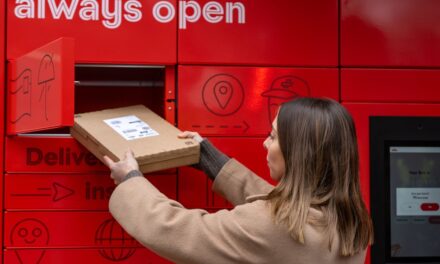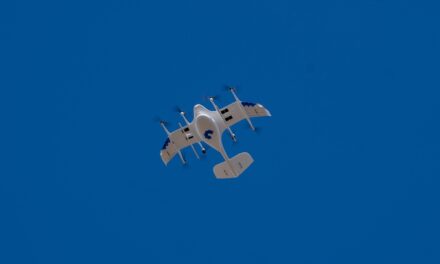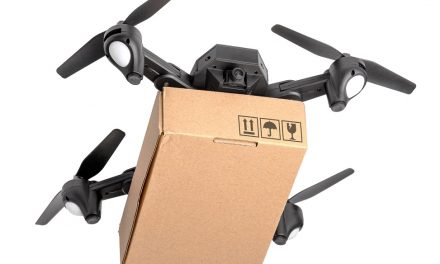
Automated Vehicles: Reshaping the Logistics Industry in 2020

“Having grown up in a small town in rural America, I had a few friends who were farmers. When harvest time came around each year, I remember hearing about their fancy combines guided by GPS. “I just sit there in the air-conditioned cab and play on my phone while the combine goes back and forth across the field.” This was years ago, and a self-driving combine was a luxury since so much of their day-to-day work outside of this new machinery was arduous and difficult,” says Matthew Wittemeier, who is responsible for Marketing at INFORM’s Logistics Division.
The concept of autonomous drones, robots, and self-driving vehicles (SDVs) is now becoming commonplace. We’re now on the cusp of eliminating the cab and allowing the farmer to sit in front of a laptop, tablet, or even use their smartphone to direct the combine. That said, we’re about to see a drastic uptick in the amount of capital expenditure and implementation of drone, robotics, and SDV technology across the logistics industry.
Labour shortages, Amazon, luxury convenience, 5G technology, the last mile, and consumer demand for the free delivery of goods within hours are regular discussions across the logistics industry. Underpinning many of these discussions is also the broader Industry 4.0 one: the automation of services by robots and AI technologies. In 2017, INFORM put together a three-part blog series titled Drones, Robots and Self-driving vehicles: Reshaping the Logistics Industry which was also published in the 2018 book Exploring New Frontiers: Reshaping the Postal Industry.
Now, three years on from the first release of that series, we’ve taken the time to dust it off and look at what’s changed around these automated technologies and what the near future might look like for them. Again, for the sake of this discussion, we’ll continue to focus on three categories of automated vehicles: unmanned aerial vehicles (UAVs, aka drones), land-based small vehicles (robots), and automotive self-driving vehicles (SDV).
Drones
According to a study from PwC from 2017, the market for drone technology was estimated to reach $127 billion in 2020, not including military uses. Since this report was completed, we’ve seen the FAA continue to design regulations for Unmanned Traffic Management (UTM) and companies incorporate drones into their operations for their usability in numerous settings as a subsequent result of improvement in cameras, battery life, sensors, communication, and other component technologies. In a recent CBInsights report, the use of drones wasn’t limited to logistics providers either, with the list featuring names like Alphabet (Google), IBM, Apple, GE, and the BBC joining the likes of Amazon, FedEx, DHL, and UPS, just to name a few.
Among the logistics operators, Amazon is still the loudest drone advocate with tangible commercial services in place. In 2019, we saw Amazon deliver more packages via its Prime Air service. If you’re not familiar with Prime Air, it touts delivery in 30 minutes or less for packages weighing less than 2.25 kg (5 lbs.) and within a 24 km (15 mi) range of the Washington, D.C. area. In the same year, DHL announced its first fully-automated drone delivery service over the skies of Guangzhou, China. Finally, we covered that UPS trucks will become a mobile hub/landing pad for a counterpart drone to deliver lightweight packages in conjunction with routes to increase efficiency and capacity in our first version of this article two years ago. Since then, UPS has been the first logistics supplier to be fully approved for commercial drone delivery by the FAA in America.
Considering the added complication of flight, continuous innovations, developing FAA regulations, and implementation costs, drone technology is still progressing slowly. However, as companies continue to tighten their grip on the value and logistics of effectively utilising drones, we will begin to see more drones moving forward, and with such a broad spectrum of usage applications available, we’d argue that a future where drones are performing small- to medium-scale services, like package or pizza deliveries among others, is no longer a question of “if,” but rather a question of “when.”
Robots
Robots, on the other hand, seem to have proven themselves on multiple fronts over the past few years demonstrating far greater possibilities than their aerial counterparts. Since land-based robots are not constrained by the limitations of sustained flight and associated payload weight restrictions, their application areas are considerably broader. Labour shortages being experienced across the globe are also providing a major opportunity for implementing robotics of all shapes and sizes to support the manufacturing, order fulfillment, and warehouse operations of logistics providers around the globe – we’ll skip the Industry 4.0 (aka “Fourth Industrial Revolution”) lesson for now.
Since 2017, we’ve seen the development of 5G (high-speed, high-reliability, mobile networks) and SLAM technology along with increasingly sophisticated WMS and OMS (Warehouse and Order Management) systems. Robots can now co-op with human counterparts to support and optimise functions for order fulfillment and inventory management across a company’s manufacturing and distribution portfolio. The data bridge between consumer and retailer has now become seamless, which allows for orders coming in to be optimised and to reroute a robot’s path through the warehouse in real-time. In some cases, robots completely take over functions that humans used to complete or alert the human to the next pick (e.g., picking SKUs for order fulfillment, replenishment, etc.) which has allowed for more efficient use of warehouse space.
A few years ago, there was a lot of discussion around the elimination of jobs similar to the plight of John Henry (i.e., “man vs. machine”). However, robots seem to have become more of a sidekick filling in the gaps that were previously subject to human error. According to a study completed by the UC Berkeley Labour Centre, displacement of workers will vary across companies experimenting with robotics, but will not drastically impact the industry in the short- or medium-term. In fact, the robots may serve to intensify workers’ day-to-day activity since the robots will be optimising workers’ activities and routes in the warehouse to fulfill orders more efficiently, resulting in increased worker activity.
The study went on to say, “With continued growth in demand, aggregate employment levels in the warehousing industry will likely continue to rise over the next five to 10 years. That said, job growth may be tempered by the increased use of labour-saving technologies in e-commerce warehouses in particular, such as autonomous mobile robots, autobaggers and autoboxers, and sensors or RFID tags applied to goods. Honeywell, for example, has developed robotic unloading machines that reduce the offloading time and work in parallel to the role of workers.”
The logistics robot market is expected to grow with an 18% compound annual growth rate (CAGR), which equates to roughly 485,000 logistics robots expected to be sold in total from 2019 to 2021. In addition to companies buying robots, we’re also seeing companies sprouting up, offering “Robots as a Service” (RaaS). RaaS is where a company sets up and rents out robots to warehouse operators and manufacturers much like you would lease out commercial vehicles or equipment. This especially comes in handy for providers that want to adopt robotics when short-handed on labor during seasonal peaks in activity or simply can’t justify the initial investment of purchasing their own.
Self-driving Vehicles (SDVs)
Since we last touched on this sector in 2017, there has been an explosion in demand for self-driving cars by consumers, parcel delivery companies, and shippers globally to take advantage of this technology. Others believe it will save lives in addition to allowing for deliveries to run more efficiently. As such, we’ve taken the step to divide this category into three sub-sections: SDVs (what you’ll find on the road), Automated Yard/Shuttle Trucks (self-driving industrial vehicles you’ll find in your depot’s yard), and Autonomous Ships (found, well…on the water).
SDVs
Safety is a big driver in the move towards any automated driving technology, SDVs included. In the U.S., the NHTSA estimate that in 2017 there were approximately 91,000 reported crashes involving tired drivers which resulted in as many as 50,000 injuries and nearly 800 deaths. They go on to say, “…there is broad agreement across the traffic safety, sleep science, and public health communities that this is an underestimate of the impact of drowsy driving.”
Skilled labour shortages are another significant driver motivating a shift to SDVs. The median age of truck drivers continues to rise around the world. In the U.S. it is now 45 and in Europe, it is 44. Age is also only half of the problem. Attracting and training drivers is also a significant challenge. According to a report from the American Trucking Association (ATA), there are more drivers than ever, but in the U.S., they continue to fall short on demand. In Europe, there is a current shortage of drivers by 20% of demand, and this is only estimated to double in the coming years.
When you consider transportation costs equate to roughly 45-55% of all costs across the supply chain (Labour Availability Challenges in Logistics Real Estate – Liz Dunn and John Vitou), it is impossible to ignore the difficulty facing the logistics industry. There is a need for strong solutions. In the U.S., this may come in the form of lowering federal age restrictions to allow adults ages 18-20 to drive Class 8 motor vehicles. But, there is also a huge incentive for companies like Man, Volvo, Sacnia, Daimler, and other manufacturers to come up with more technical solutions like SDVs and Platooning. And, it isn’t just suppliers bringing technology to the market. In mid-2019, the U.S. Postal Service started testing autonomous vehicles on runs between Phoenix and Dallas noting that the move comes as a way to constrain operating costs as much as it is to improve safety and efficiency.
Automated Yard/Shuttle Trucks
Most manufacturers agree that to bring a Level 4 (fully autonomous vehicle) to public roads is a medium-term goal, and it requires continuous refinement and further investments in the technology. In general, the controlled environments of internal yards are the perfect location for autonomous trucks to be introduced into logistics operations. In fact, internal logistical operations were one of the first implementations of automated vehicles.
Automated Guided Vehicles, or AGVs, were introduced to the maritime logistics sector in 1993 at ECT’s Delta/Sealand Terminal in Rotterdam, The Netherlands. Since then, many maritime terminals around the world have embraced the technology in their broader transitions towards becoming mostly or fully-automated, which in turn has seen the technology improve and the costs reduce. In the past three years, we’ve seen significant options come into the market.
Just last year, two major players announced automated yard vehicles, and there are multiple Europe-based projects actively testing the feasibility of these solutions. ZF released its ZF Innovation Truck, capable of handling swap bodies (which complemented its existing Automated Terminal Yard Tracktor), and we were also were introduced to the futuristic, fully-electric Volvo Vera for more typical trailer handling. Both are purpose-designed for use in manufacturing and distribution yards, and importantly, both come in at a price that will drive a strong ROI for logistics yard operations. Dachser and the Fraunhofer Institut are testing solutions together in Dortmund, Germany, and the Austrian Post and the Technical University Graz are working together to test autonomous technologies to name just a couple more.
Autonomous Ships
Rolls Royce Marine and Japanese shipping company Nippon Yusen have claimed they will have un-crewed cargo ships, or autonomous ships, in operation as early as 2020. Most shipping accidents occur as a result of human error. The Maritime Journal said in 2017, “It is estimated that between 75% to 96% of marine accidents can be attributed to human error.” As we see with vehicles on land, taking human error out of the equation could improve safety across the board.
The costs to remove wrecks, impacts on the environment, and liabilities to the crew and other ships are huge, and there are major incentives to streamlining a solution that mitigates the risk that comes with maritime transportation of goods. However, instead of allowing ships to become completely autonomous, there is a consensus that they will be more of a hybrid between remote navigation/control as needed and autonomy reliant upon sensor arrays positioned throughout each vessel. Each shipper will have, essentially, a traffic control group that will take over a ship when necessary. The crew goes from being on the ship to sitting behind a desktop in an office building somewhere.
Reshaping our Industry
As we move squarely into the Fourth Industrial Revolution, it seems the promises of automation are everywhere. It is important for logistics operators to consider experience as they move into the field of automation. INFORM has been working with automated ports for over 20 years now, and we’ve learned a lot along the way. We’ve also been part of an industry that, to this day, is still learning how to implement automation well. All of this knowledge and experience is built into the core of our software solution, Syncrotess.
For distribution centers and post and parcel operators, Syncrotess performs as a powerful Yard Management System that is ready to support fully-automated and semi-automated yards right out of the box. And, with a powerful AI engine under the hood, our YMS will complement your investment in automated hardware with an automated software solution truly transforming your yard-handling operations and delivering a powerful ROI.
This article has been written by INFORM’s Senior Vice-President Dr Eva Savelsberg, INFORM’s Key Account Manager, Markus Sekula and Matthew Wittemeier, who is responsible for Marketing at INFORM’s Logistics Division.












